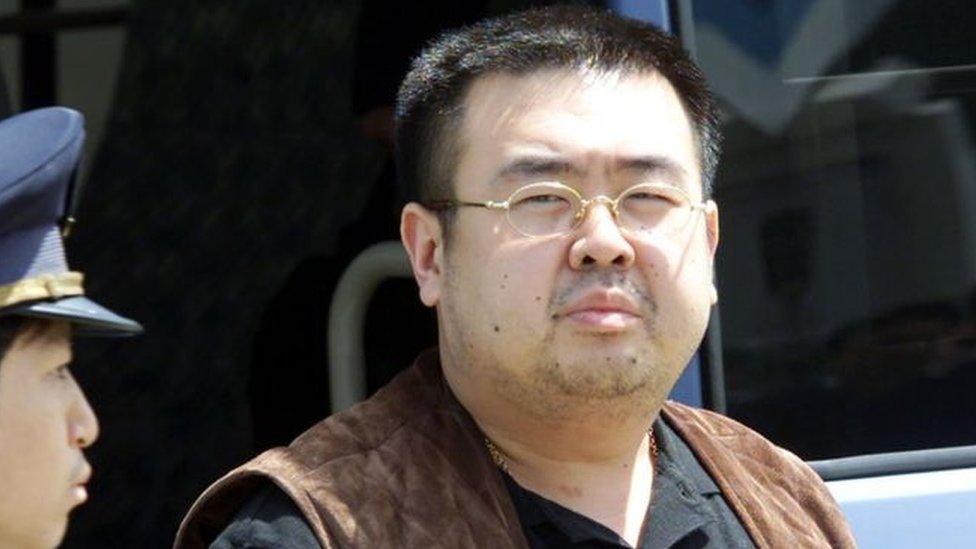Kim Jong-nam death: Unravelling the mystery
- Published
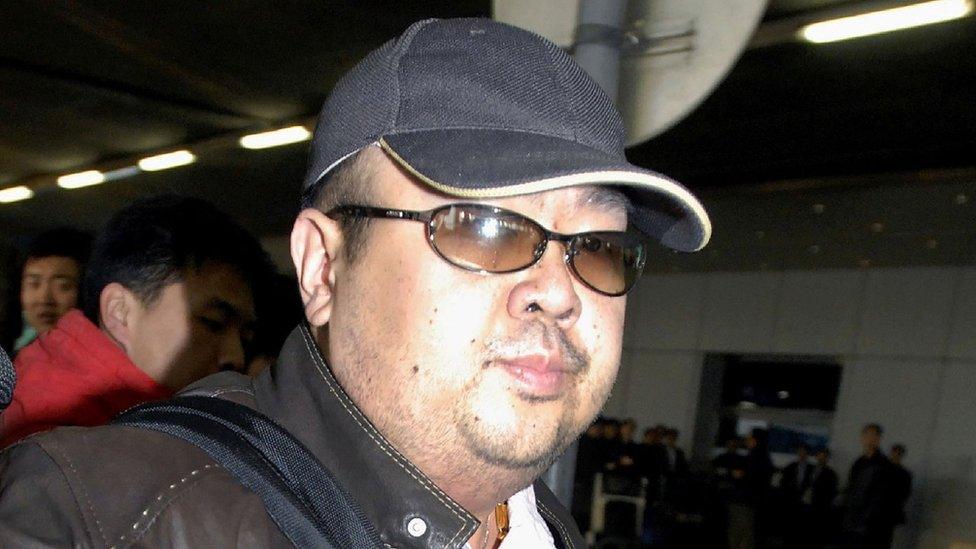
It's got all the markings of a John Le Carre novel: the killing of the North Korean leader's brother with one of the deadliest chemical weapons created by man. But who by? And why? Many questions remain unanswered.
Here's a look back at how the killing unfolded, the details that emerged, and the subsequent accusations and diplomatic row.

13 February - The airport attack
He was waiting at a budget departure hall inside Kuala Lumpur international airport when the attack happened. Leaked CCTV footage would later show the 45-year-old man loitering in the budget terminal, a rucksack slung over his shoulder, ahead of his return flight to the Chinese territory of Macau at 10:00.
Suddenly a woman in a long-sleeve white top approaches him from behind. Her hands grab his face, before she walks away. It's not clear if she uses a cloth or her bare hands to touch his face.
The attack is over in a matter of seconds.
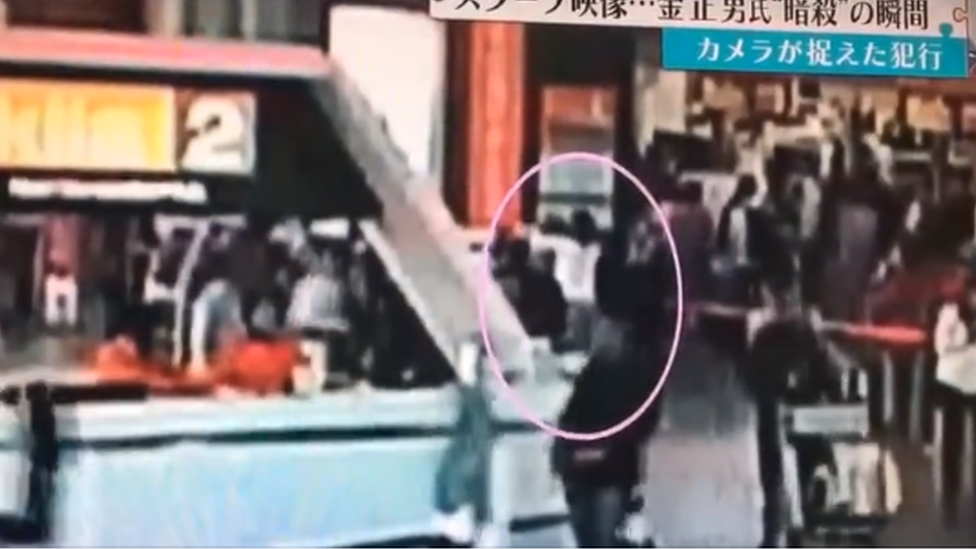
CCTV footage appears to show a woman accosting Mr Kim in the airport
The man reportedly told airport staff that "someone had grabbed him from behind and splashed a liquid on his face".
He sought medical help at the airport, but later died en route to hospital.
A day later, he was confirmed to be Kim Jong-nam, the half-brother of North Korean leader Kim Jong-un.

14 February - The media catches up
Reports on the attack first start to emerge in South Korean media, who name the man as Kim Jong-nam - it's not until two days later that Malaysia confirms his identity.
To complicate matters, he was travelling on a passport under the name Kim Chol. It was not the first time Mr Kim had travelled under an assumed identity: he was caught trying to enter Japan using a false passport in 2001. He told officials he had been planning to visit Tokyo Disneyland.
Many believe it was this incident that led to his father's decision to pass him over for leadership, forcing him to live a life in exile. During a time of estrangement from his family, Mr Kim became one of the regime's highest-profile critics.
Theories abound that North Korea might have been involved in his murder - what some are already calling an assassination - despite a lack of proof.
South Korea was one of the first to point the finger at its northern neighbour.

15 February - First arrest
Malaysian authorities begin the autopsy, ignoring demands from North Korea to send the body back for investigation.
Meanwhile, the first person suspected of involvement in the attack is arrested: a 28-year-old Vietnamese woman named Doan Thi Huong. Police say she was identified from CCTV footage taken at the airport, where she was seen wearing a white top emblazoned with the letters "LOL".

This CCTV image has been broadcast by South Korean and Malaysian media

16 February - Confirmation and further arrests
Four days after the airport attack, Malaysia's deputy prime minister officially confirms the dead man is Kim Jong-nam.
Another female suspect, Siti Aisyah, a 25-year-old Indonesian, is named and arrested. Her Malaysian boyfriend, Muhammad Farid Jalaluddin, is briefly questioned by police.

17 February - 'It was a prank'
Events take a bizarre turn when Siti Aisyah tells police she thought she was taking part in a bizarre TV prank with Mr Kim.
Indonesia's most senior policeman, Tito Karnavian, said Ms Aisyah and Doan Thi Huong had performed the prank on other men - persuading them to close their eyes before spraying them with water.

Siti Aisyah was the second suspect to be named
"She was not aware that it was an assassination attempt by alleged foreign agents," Mr Karnavian told reporters.
Tensions between Malaysia and North Korea also start to simmer after North Korea's ambassador to the country says Pyongyang will reject the results of the autopsy - he does not trust the inquiry, he says.
Malaysia also refuses to hand over the body until it receives a DNA sample from Mr Kim's next-of-kin.

18 - 19 February - North Koreans implicated
Malaysian police arrest the first North Korean person over Mr Kim's death - a 46-year-old man called Ri Jong Chol.
A day later, Malaysian police widen their search to include four more suspects, all men from North Korea.
They are named as: Ri Ji Hyon, 33; Hong Song Hac, 34; O Jong Gil, 55, and Ri Jae Nam, 57.
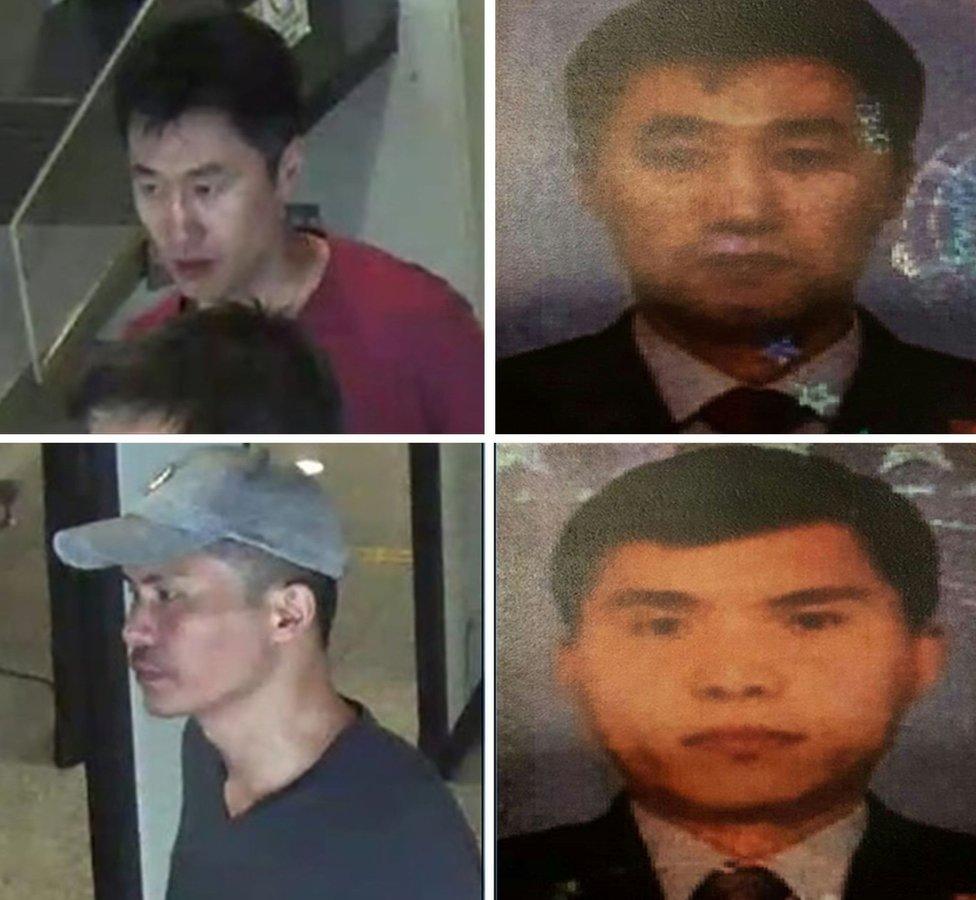
Two of the suspects wanted by Malaysian police: Hong Song Hac, 34, and Ri Ji Hyon, 33
The deputy police chief said the men had left Malaysia on 13 February, the day Mr Kim was killed, after arriving on different days within the previous fortnight.
International police agency Interpol are later requested to issue an alert for the suspects.
At the same time, South Korea explicitly states it believes its northern neighbour was behind the killing of Kim Jong-nam.

20 February - Diplomatic row
Tensions between North Korea and Malaysia threaten to turn into a full-blown diplomatic row as the latter recalls its ambassador from the North Korean capital Pyongyang and summons the North Korean ambassador "to seek an explanation".
Fuji TV airs grainy CCTV footage of the attack for the first time. The lady with the white top emblazoned with the letters "LOL" is seen lunging at Kim Jong-nam.

21 February - No family ID
Malaysian authorities say they are unable to formally identify the body because no family member has come forward. Security is high at the Kuala Lumpur mortuary, amid widespread speculation Mr Kim's son, Kim Han-sol, might travel to Malaysia.
Malaysia and North Korea continue to trade harsh words as the situation escalates.

22 February - Embassy official in firing line
A senior North Korean embassy official is named as one of two men wanted in connection with the killing as the investigation widens.
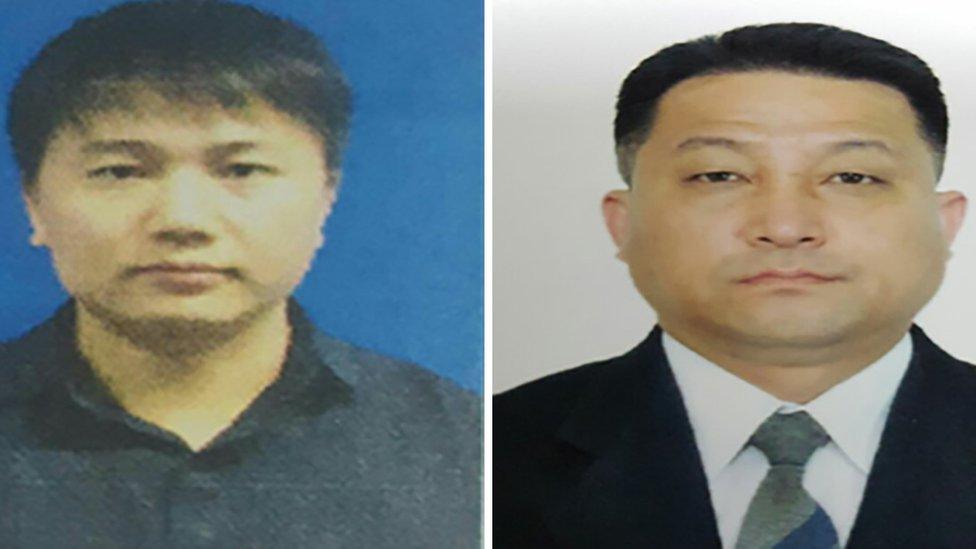
Passport photos of Kim Uk II (left) and Hyon Kwang Song
The men are Hyon Kwang Song, 44, the second secretary of the North Korean embassy in Kuala Lumpur and Kim Uk II, 37, who works for North Korean airliner Air Koryo.
Malaysian police also confirm Mr Kim died after two women wiped a toxin on his face while he was waiting for his flight to Macau.

23 February: The blame game continues
North Korea appears to blame Kim Jong-nam's death on Malaysia, without actually naming him.
The state news agency KCNA said only that "a citizen of the DPRK [Democratic People's Republic of Korea]" travelling on a diplomatic passport had died due to "a heart stroke".
Reports of poisoning were false, it said, slamming Malaysia for holding an autopsy without North Korea's permission.
It is the first time North Korean state media have referred to Mr Kim's killing.

24 February - Deadly nerve agent
One of the deadliest chemical weapons created by man is confirmed by Malaysia to have been the nerve agent that killed Kim Jong-nam.
Just a small drop of VX, which is classified as a weapon of mass destruction by the United Nations, can kill a person within minutes.
One of the woman who attacked Mr Kim suffered symptoms of vomiting, which Malaysian officials say was probably due to exposure to the agent.
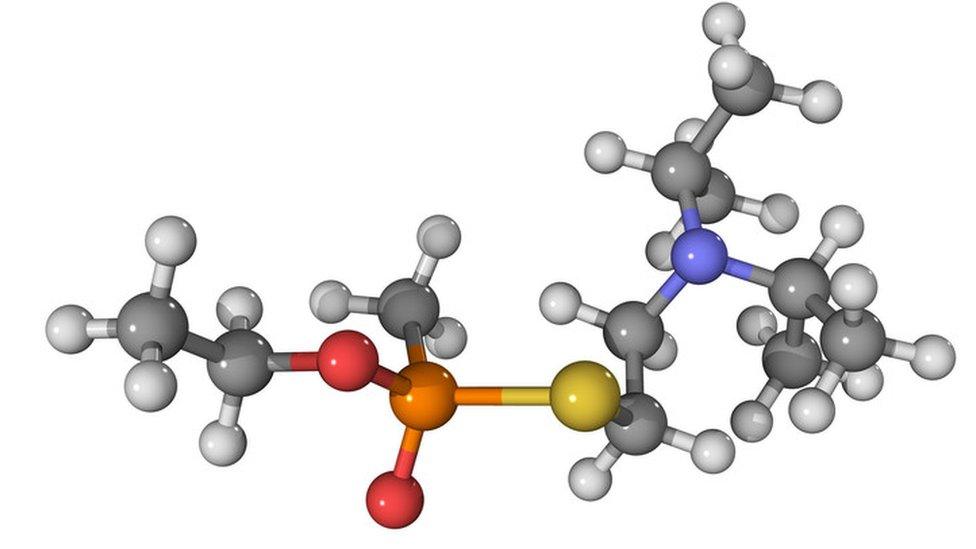
Weapons expert Bruce Bennett says a small quantity of VX was likely to have been put on cloths used by the attackers to touch his face, with a separate spray possibly used as a diversion.
Malaysian police chief Khalid Abu Bakar previously said the fact the woman who accosted Mr Kim immediately went to wash her hands showed she was "very aware" that she had been handling a toxin.
It would have begun affecting his nervous system immediately, causing first shaking and then death within minutes.
VX is not available commercially, which experts say points to some kind of government involvement. There are a number of North Korean organisations capable of directing such an attack, including the exclusive Guard Command.
- Published24 February 2017

- Published15 February 2017
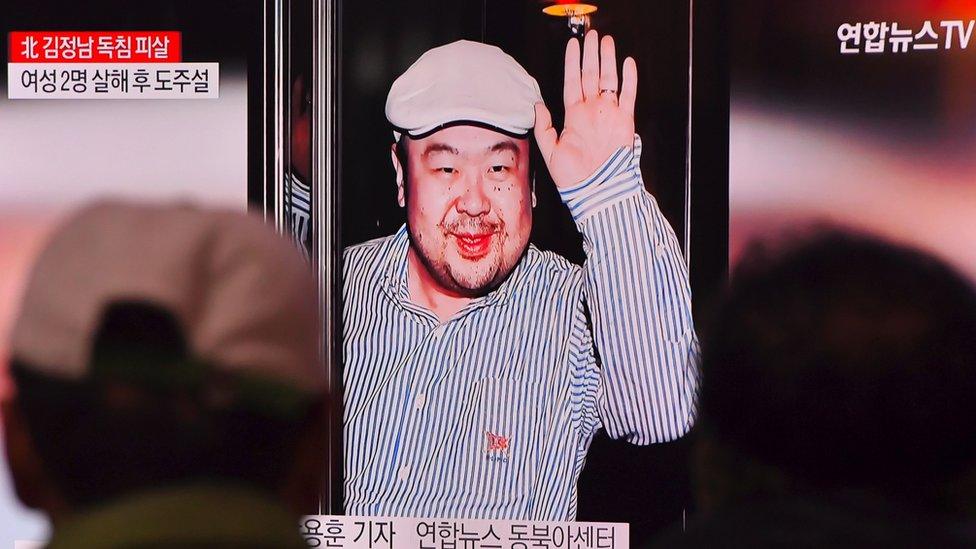
- Published2 October 2017
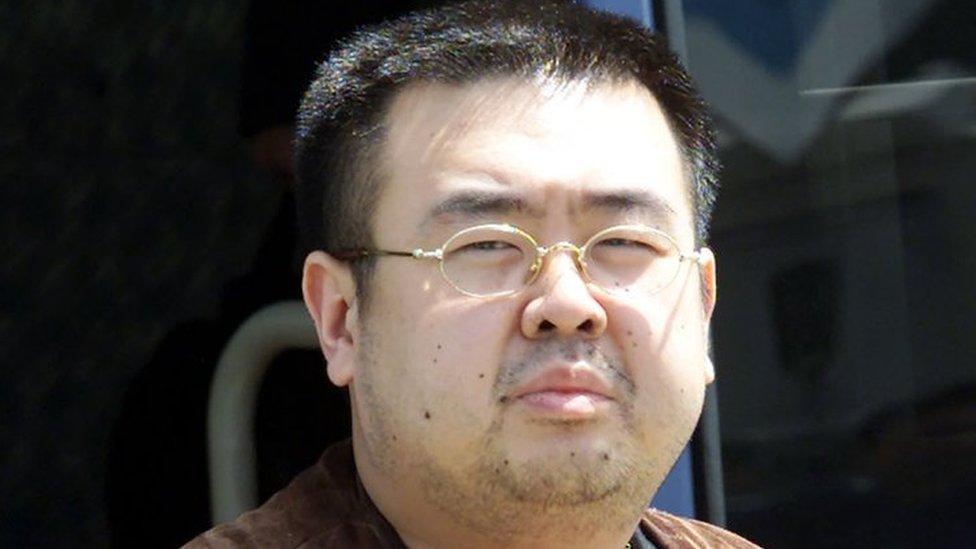
- Published14 February 2017

- Published23 February 2017
